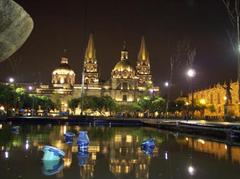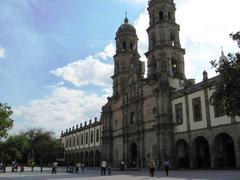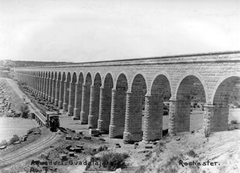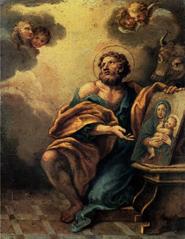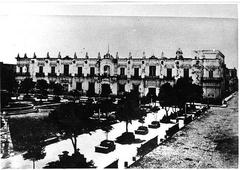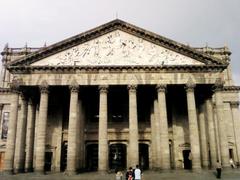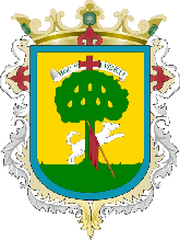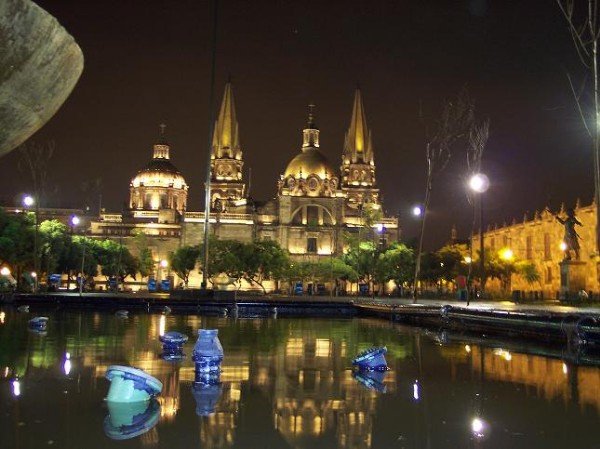
Plaza de la Liberación: Visiting Hours, Tickets, and Historical Significance
Published Date: 17/07/2024
Introduction to Plaza de la Liberación
Nestled in the heart of Guadalajara, Mexico, Plaza de la Liberación, affectionately known as ‘Plaza de las Dos Copas’ (Plaza of the Two Cups), stands as a testament to the city’s rich historical and cultural tapestry. This iconic plaza, with its blend of historical significance and modern vibrancy, is a must-visit destination for anyone exploring Guadalajara. From its origins as a bustling marketplace in the 16th century to its current role as a central hub for cultural and social gatherings, Plaza de la Liberación offers a unique glimpse into the evolution of Guadalajara. This guide aims to provide a comprehensive overview of the plaza’s history, visitor information, nearby attractions, and travel tips to help you make the most of your visit to this remarkable landmark.
Table of Contents
- Introduction
- Historical Background of Plaza de la Liberación
- Visitor Information
- Travel Tips and Nearby Attractions
- Frequently Asked Questions (FAQ)
- Conclusion
Historical Background of Plaza de la Liberación
Plaza de la Liberación boasts a rich history intertwined with the evolution of Guadalajara. Its story stretches back to the city’s founding, with the plaza’s location initially serving as the northern edge of the original city plan.
Early Years: From Market to Plaza
- 16th Century: The area that is now Plaza de la Liberación began as a bustling marketplace and gathering space known as ‘Plaza del Mercado’ (Market Square). This open area served as a central hub for commerce and social interaction in the nascent city.
- 1793: The plaza underwent its first significant transformation with the construction of the beautiful neoclassical Teatro Degollado. This grand theater, named after Santos Degollado, a prominent figure in Mexican history, replaced an older, more modest theater that once stood on the site. The Teatro Degollado’s inauguration marked a turning point, elevating the plaza’s status as a cultural center.
- 19th Century: Throughout this period, the plaza continued to evolve, reflecting the changing times. Its name shifted from Plaza del Mercado to Plaza de la Constitución, aligning with Mexico’s newly independent status. The plaza witnessed key historical events, serving as a stage for celebrations, protests, and even battles during the tumultuous 19th century.
20th Century: A Symbol of Progress and Liberation
- Early 20th Century: The dawn of the 20th century brought modernization efforts to Guadalajara, and Plaza de la Constitución was not spared. The plaza underwent a significant redesign in the 1930s under the direction of architects Ignacio Díaz Morales and Daniel Reynoso. This renovation saw the introduction of the iconic ‘Conjunto escultórico de la Fuente de la Inmolación de Quetzalcóatl’ (Sculptural Ensemble of the Fountain of the Immolation of Quetzalcoatl), a magnificent fountain complex that quickly became a symbol of the city.
- 1952: In a move that solidified the plaza’s place in Guadalajara’s heart, it was renamed ‘Plaza de la Liberación’ (Liberation Square) to commemorate the 400th anniversary of the city’s founding. This name change reflected a broader theme of progress and liberation that characterized Mexico during this period.
Plaza de la Liberación Today: A Blending of History and Modernity
Today, Plaza de la Liberación stands as a testament to Guadalajara’s vibrant past and its dynamic present. The plaza seamlessly blends historical grandeur with modern urban life. It’s a place where locals and tourists alike gather to enjoy cultural events, soak in the city’s ambiance, or simply relax amidst the beauty of the surroundings. The plaza’s historical significance, coupled with its modern-day vibrancy, makes it a must-visit destination for anyone exploring the heart of Guadalajara.
Visitor Information
Visiting Hours and Tickets
Plaza de la Liberación is open to the public 24 hours a day, seven days a week. There is no entrance fee to visit the plaza itself, making it an accessible attraction for everyone. However, if you wish to visit the Teatro Degollado or other nearby museums, there may be admission fees.
Guided Tours
For those interested in a deeper understanding of the plaza’s history, guided tours are available. These tours often include visits to nearby historical sites and provide rich context about the significance of Plaza de la Liberación. Check with local tour operators for schedules and prices.
Travel Tips and Nearby Attractions
Getting There
Plaza de la Liberación is conveniently located in the city center, making it easily accessible by public transportation, taxis, or even on foot if you’re staying nearby.
Nearby Attractions
- Teatro Degollado: Located adjacent to the plaza, this historic theater is a must-visit for its stunning architecture and rich cultural offerings. (Teatro Degollado)
- Cathedral of Guadalajara: Just a short walk from the plaza, this iconic cathedral is one of the city’s most recognizable landmarks. (Cathedral of Guadalajara)
- Rotonda de los Jaliscienses Ilustres: A monument honoring notable figures from the state of Jalisco, located close to the plaza. (Rotonda de los Jaliscienses Ilustres)
Accessibility
Plaza de la Liberación is designed to be accessible to all visitors, including those with disabilities. The plaza features wide pathways and ramps, ensuring that everyone can enjoy this historic site.
Special Events and Photographic Spots
Throughout the year, Plaza de la Liberación hosts a variety of cultural events, including concerts, festivals, and public gatherings. These events offer fantastic opportunities for photography, as does the plaza’s beautiful architecture and the stunning fountain complex.
Frequently Asked Questions (FAQ)
Q: What are the visiting hours for Plaza de la Liberación?
A: The plaza is open to the public 24/7.
Q: Is there an entrance fee to visit Plaza de la Liberación?
A: No, visiting the plaza is free. However, nearby attractions like the Teatro Degollado may have admission fees.
Q: Are guided tours available?
A: Yes, guided tours are available and often include visits to other historical sites in the area.
Q: What are some nearby attractions?
A: Nearby attractions include Teatro Degollado, the Cathedral of Guadalajara, and Rotonda de los Jaliscienses Ilustres.
Conclusion
Plaza de la Liberación is more than just a historical site; it’s a living testament to Guadalajara’s rich cultural heritage and modern vibrancy. Whether you’re interested in history, culture, or simply relaxing in a beautiful setting, this plaza offers something for everyone. Don’t miss the chance to explore this iconic landmark during your visit to Guadalajara.
For more travel tips and information, be sure to check out our related posts and download the Audiala mobile app for the latest updates. Follow us on social media for more exciting travel content!
